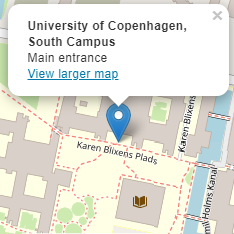The Tear-Drenched Tumen
The Psychological Impact of Border Changes Depicted in Zhang Lü’s Tumen River (2011)

Public guest lecture by Dr. Jerôme de Wit (Universität Tübingen, Germany).
On a geographical level, rivers connect: state with state, interior with exterior, one region with another, the past with the present. At the same time rivers are also a separating force: separating nations, subcultures, and families.
For the Korean Chinese living at the border with North Korea, the Tumen River contains all these aforementioned meanings within its being. The crossing of this river is seen as the foundation on which the identity of the Korean minority in China rests. Its psychological and cultural significance is revealed by the vast amount of songs, oral narratives, and literature about the Tumen River.
The past fifteen years, however, a shift can be seen in Korean-Chinese attitudes towards the river. The Korean Chinese director Zhang Lü depicts in his movie Tumen River (2011) these different attitudes and changes in a subtle, yet powerful way.
I will talk about the significance of the river to the characters in the movie, what role it plays in their day-to-day lives, and how they try to cope with the idea that the Tumen River has changed into a physical and impassable border between North Korea and China.
Bio
Jerôme de Wit is Junior Professor in Korean Studies at the University of Tübingen, Germany. He is a specialist on North and South Korean Wartime Literature and modern Korean culture.
His research interest in Korean culture is focused on public discourses concerning history and society and how cultural sources can provide us with different viewpoints on debates such as nationalism, identity, and history.
His recent projects deal with such topics as postcolonialism in contemporary South Korean alternate history novels, and a study on the representation and changes in identity in the literature and movies of ethnic Koreans in China.

